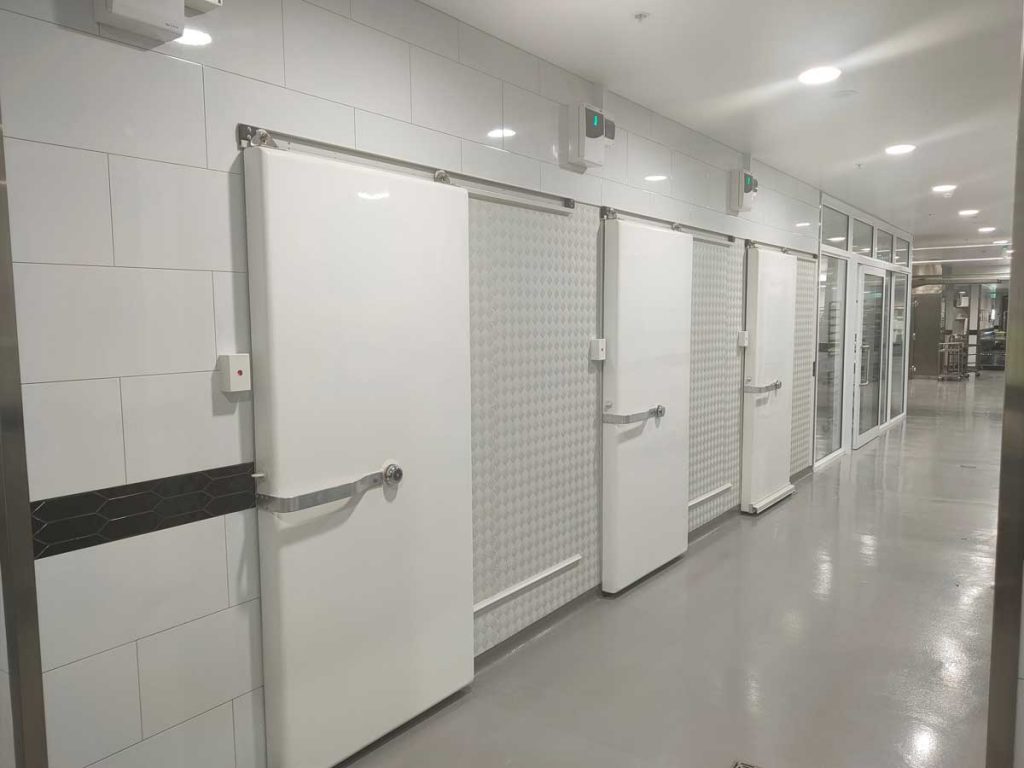
When running a business that handles perishable goods, proper storage is crucial. Whether you’re in food manufacturing, pharmaceuticals, or scientific research the integrity of your products depends on maintaining consistent temperatures in a stable environment, and this is where cold rooms come into play. In this post, we’ll take a look into the essentials of cold room insulation, exploring the types of insulated panels available and key design considerations.
Types of Insulated Panels for Cold Rooms
Insulated panels are fundamental to cold room construction. These panels consist of a core material sandwiched between two structural boards, providing robust and efficient thermal insulation. Here are the common types used in cold rooms:
1. Expanded Polystyrene Insulated Panels (EPS)
These are known for their lightweight and excellent thermal resistance, EPS panels are cost effective and widely used in cold storage.
2. Polyurethane Insulated Panels (PIR)
Offering superior insulation and structural strength, PIR panels are highly resistant to moisture and provide long term durability.
3. XFLAM Insulated Panels
XFLAM panels are renowned for their superior fire resistance and structural rigidity. These panels offer excellent thermal performance and are environmentally friendly, making them a preferred choice for businesses that prioritise safety and sustainability.
Each type has unique benefits and is chosen based on specific requirements such as desired temperature range, durability and environmental impact.
Cold Room Design Considerations
Designing a cool room involves several crucial considerations to ensure optimal performance and efficiency. The thickness and material of the insulated panels are determined by various factors such as the desired temperature, the weight of stored products, external heat exposure, and foot traffic.
Essential Design Elements
Interlocking floor-to-ceiling walls, sometimes incorporating a large or standard-sized door, are designed to eliminate gaps and prevent air leaks. This design ensures a consistent temperature throughout the cool room.
Floors also require additional insulation to prevent heat transfer from the surface, especially in areas with high foot traffic. Having a well insulated floor helps maintain the overall temperature of the cool room.
The roof can be exposed to sunlight or foot traffic from an upper floor and as such needs effective insulation. Properly insulating the roof minimises heat ingress and maintains a stable internal environment.
Characteristics of a High Quality Insulation System
A high-quality insulation system is defined by several characteristics:
1. A High R Value
The R value measures thermal resistance. For optimal efficiency, cold room panels should have an R value up to 40.
2. Panel Thickness
Insulated panels should be between 5cm and 30cm thick, depending on the specific requirements of the cold room.
3. Adequate Sealing
Properly sealed panels are crucial to prevent air leakage, control bacteria, and reduce dust contamination. This ensures a hygienic environment for stored goods.
4. Compressive Strength
Insulated panels should possess high compressive strength to support the weight of the floor and any equipment or foot traffic.
Always Invest in Quality
Investing in a well insulated cold room is essential for businesses dealing with perishable goods. The choice of insulated panels, attention to design details, and ensuring high quality insulation characteristics are all critical factors. At Auscool, we pride ourselves on delivering custom cold room solutions that exceed industry standards, ensuring your products are stored safely and efficiently.





















